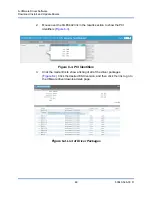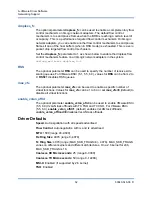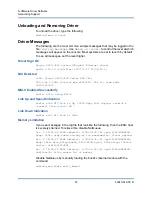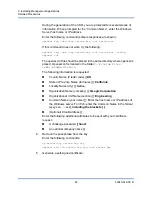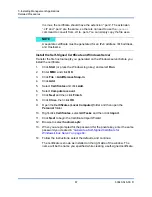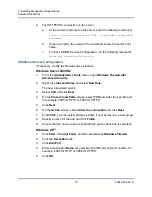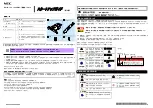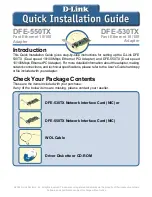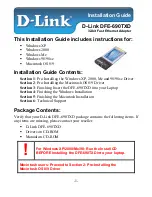
7–Installing Management Applications
Installation Tasks
58
83840-546-00 D
Communication Protocols
A communication protocol enables exchanging information between provider and
the client software. These are proprietary or open-source implementations of the
Web-Based Enterprise Management (WBEM) and Common Information Model
(CIM) standards from the Distributed Management Task Force (DMTF). Network
administrators can choose the best option based on the prevailing standard on
their network.
shows the available options based on the operating systems installed
on the managed host and the client.
If your network includes a mix of Windows and Linux clients accessing Windows
and Linux servers, then WS-MAN is a suitable choice. If Linux is the only OS
installed on the servers, then CIM-XML is an option. If the network includes only
Windows servers and clients, WMI is an option. WMI is very simple to configure
but is supported only on the Windows OS.
Installation Tasks
QCS installation includes installing the provider component on the managed host
and the client software on the management station. The installation process
differs based on the combination of operating systems installed on the client and
managed host and on the selected communication protocol. The following
sections list each task in the overall process and provide links to the specific steps
for each task, as found in
“Detailed Procedures” on page 61
.
Table 7-1. QCS Communication Protocols
If the client uses:
And the managed
host uses:
QCS can use these
communication protocols:
Windows
Windows
WMI
WS-MAN (WinRM)
Windows
Linux
CIM-XML (OpenPegasus)
WS-MAN (OpenPegasus)
Linux
Windows
WS-MAN (WinRM)
Linux
Linux
CIM-XML (OpenPegasus)
WS-MAN (OpenPegasus)
WMI = Windows Management Instrumentation.
WS-MAN = Web Service-Management. WinRM is a Windows-based implementation
and OpenPegasus is an open-source implementation of the that operates on Linux.
CIM-XML = An XML-based version of OpenPegasus.
Summary of Contents for 8400 Series
Page 390: ......





